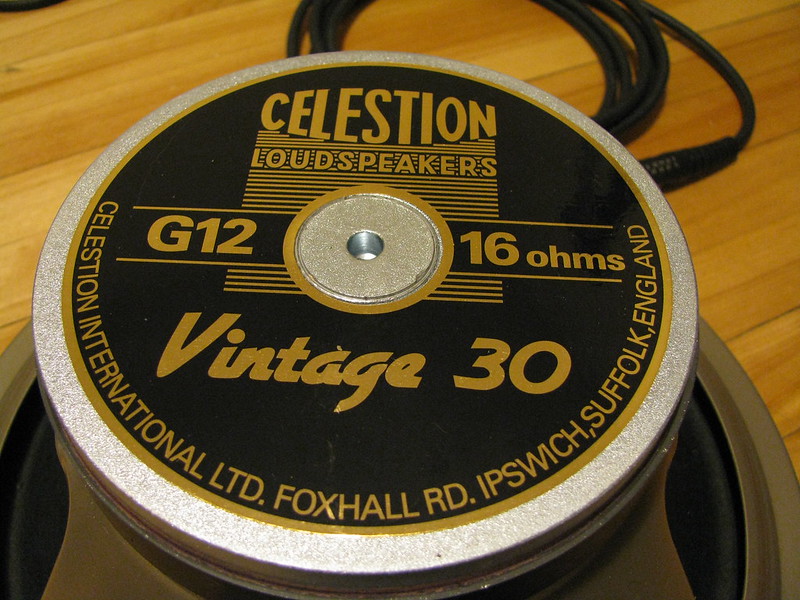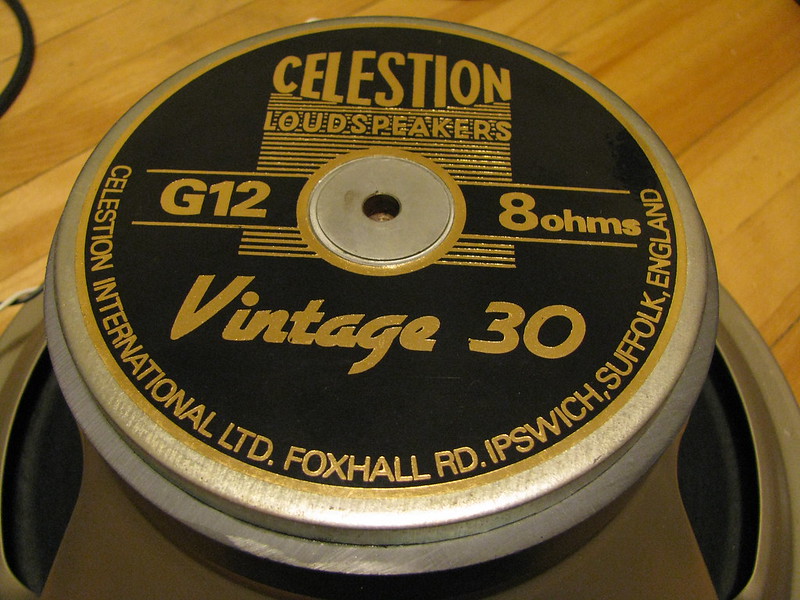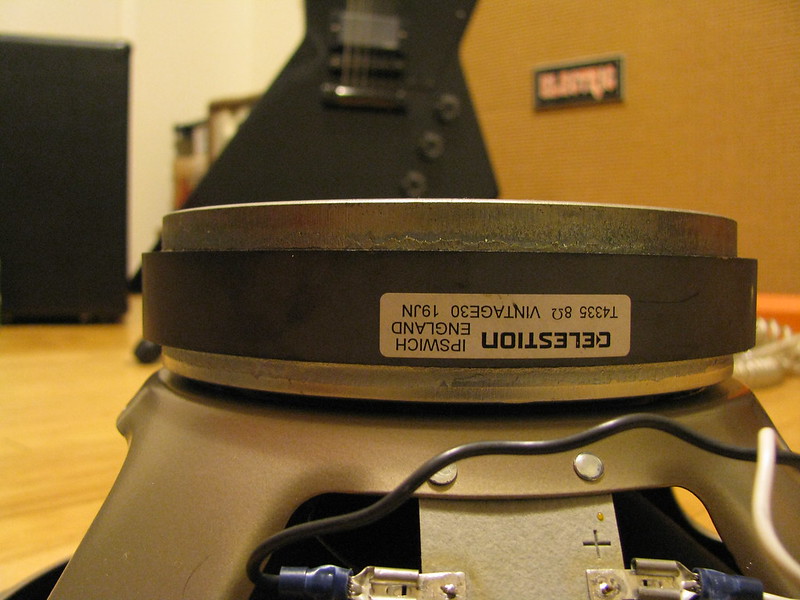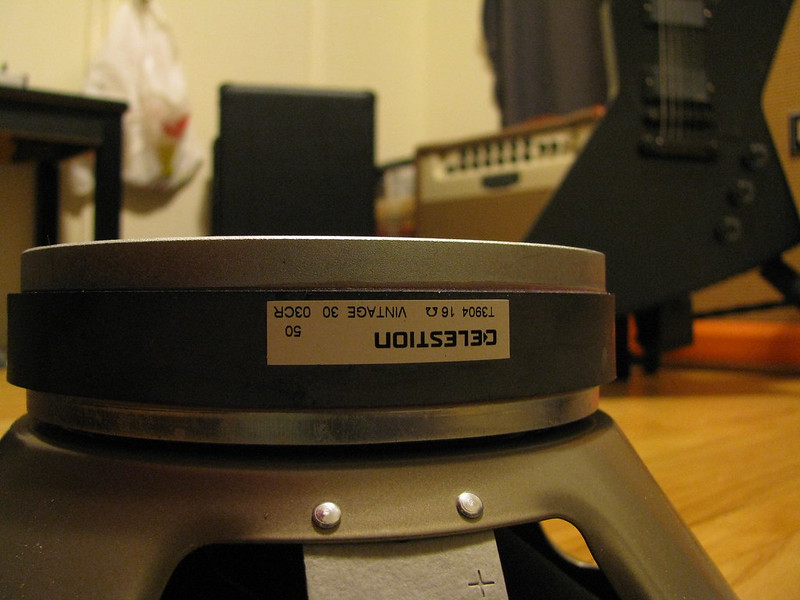=MGSchindel;10054597]What do Vintage 30s sound like?
That's a good question, since there seem to be at least three distinct voicings of this speaker that I keep coming across. After years of mic'ing different cabs and cranking different cabs and mixing different speakers with different amps, looking for the right tones, liking some of them and not liking others, on occasion, I've pulled this together just from general observations:
The Mesa-only proprietary V30 seems to have its own thing going. Warmer and smoother right out of the gate, with its mids shifted lower and its highs more rolled off than the others, it sounds more broken in almost right away, to my ear, no matter what cab you stick it in. It carries its own celestion model codes. Here is a Mesa-only, custom-voiced proprietary V30, English made, post 2002, taken out of tall Recto cab. Model T4335 with extra copper on voice coil, seems like slightly different suspension and adhesives, straight 444 cone, etc.
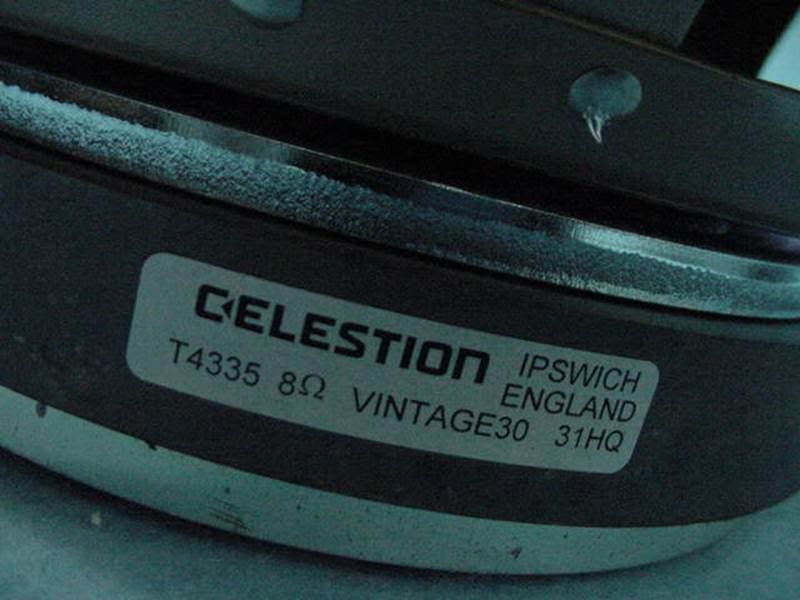
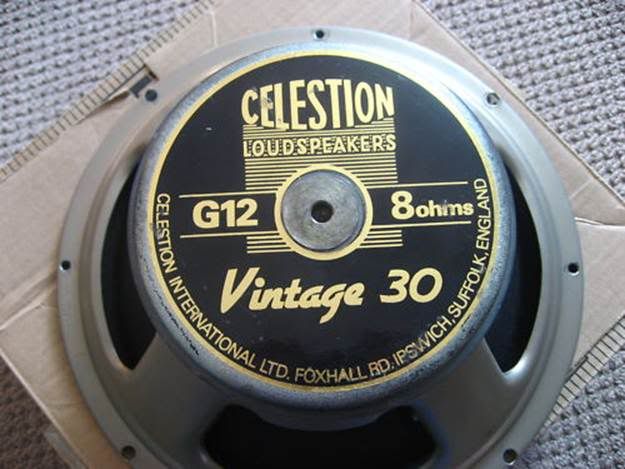
Below is an old mid-90’s England-made (same as current chinese made) celestion-only voiced V30, painted tan-gold frame, model T3904, cone is stamped D20 444…..mids and treble sit differently from the Mesa and Marshall versions, to my ear, and I guess celestion couldn't be using either of the proprietary mesa or marshall voiced V30 sounds, for its own raw frame speakers available to the general public. Other amp manufacturers that are NOT mesa or marshall typically have this version of the V30 in their cabs, such as Engl, Randall, etc. Still reasonably warm but can be chesty and fizzy with some amps, and really benefits from heavy break-in to smooth out the fatiguing mid spike it throws off with some amps. Seems to have some extra 700hz too.
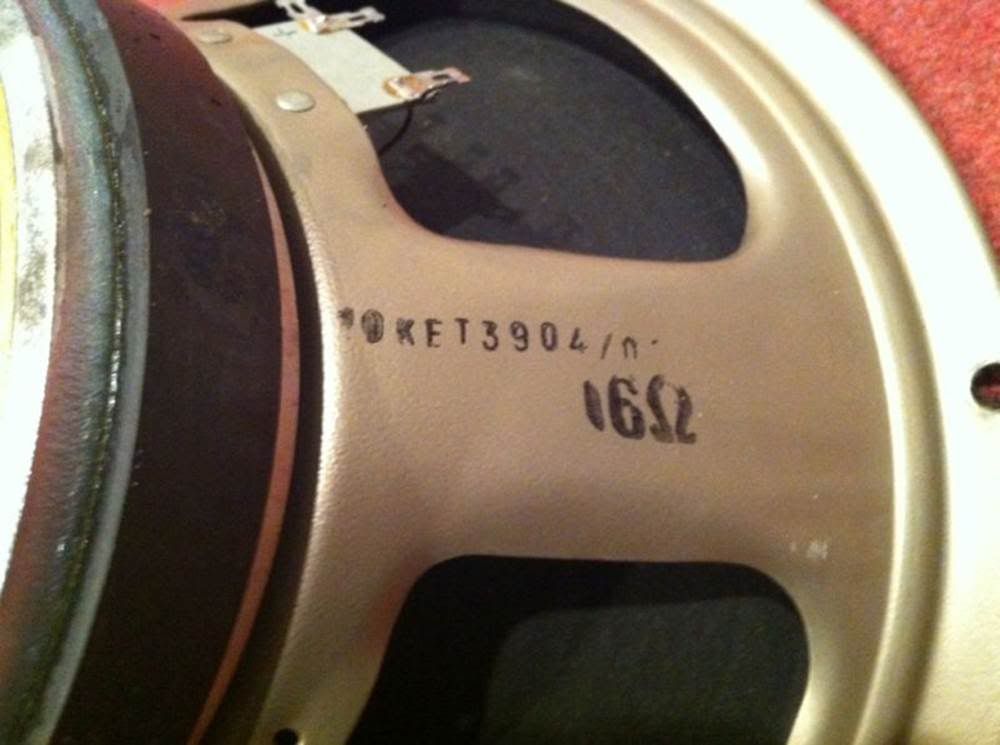
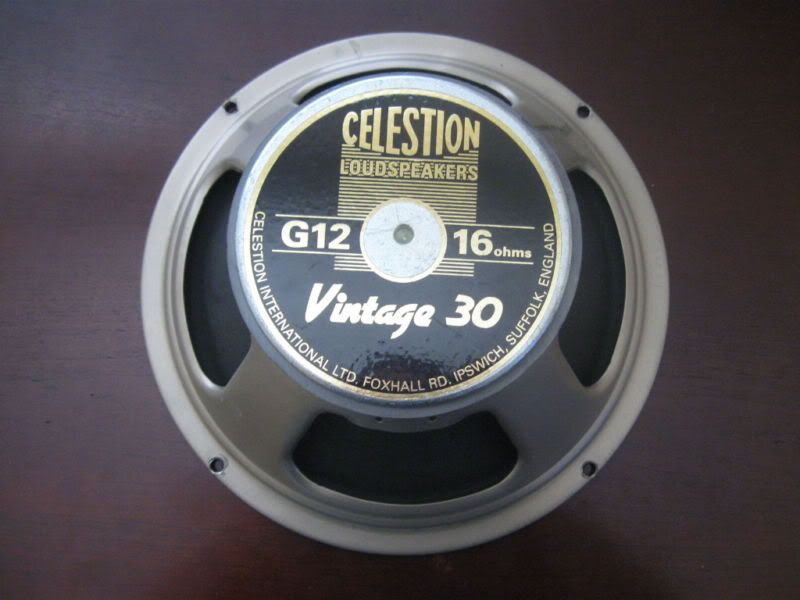
And here’s the Marshall “Vintage” proprietary marshall-only model T3897, raw silver frame, made by celestion in England for Marshall, OEM. It never actually has Vintage "30" printed on the magnet sticker, just "Vintage". This is the first, earliest, longest-running, and original V30, initially designed and released in 1986 for use in some Marshall amps and cabs, before Mesa and Celestion ever had their own custom voicings later on in the 90's. If you're hearing a v30 tone on a recording made before 1990, it's these speakers. They were originally designed to sound almost like an AlNiCo speaker, but using a large ceramic magnet, sort of a cross between a celestion Blue and a G12H30.
This Marshall Vintage speaker seems the brightest, most crunchy, most metallic and most cutting of the bunch, with the upper mids and treble sitting differently (shifted higher up, overall) than either of the later mesa-only or celestion-only variants, to my ear. Less chesty mid-mids, and harder sounding upper mids, than the others. Treble can be quite piercing depending how you dial it with some amps, at high volumes. The cones are always just stamped 444. You'll find these in some of the old Marshall silver jubilee cabs from 1987-1988 particularly, and thereafter in the current- production Marshall 1960AV/BV cabs:
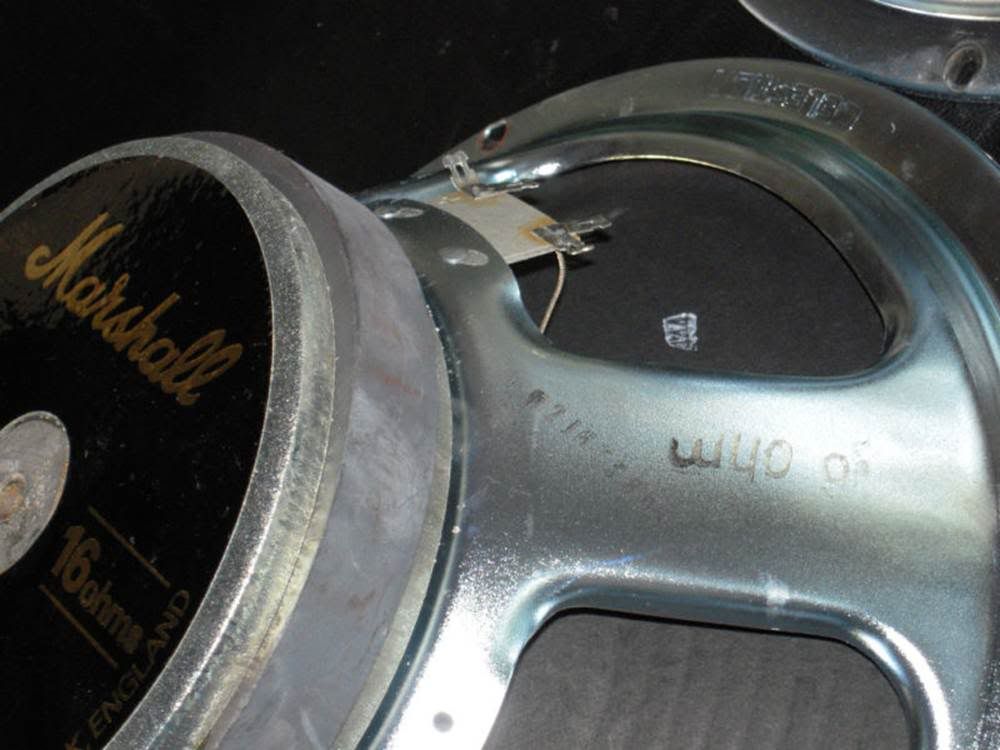
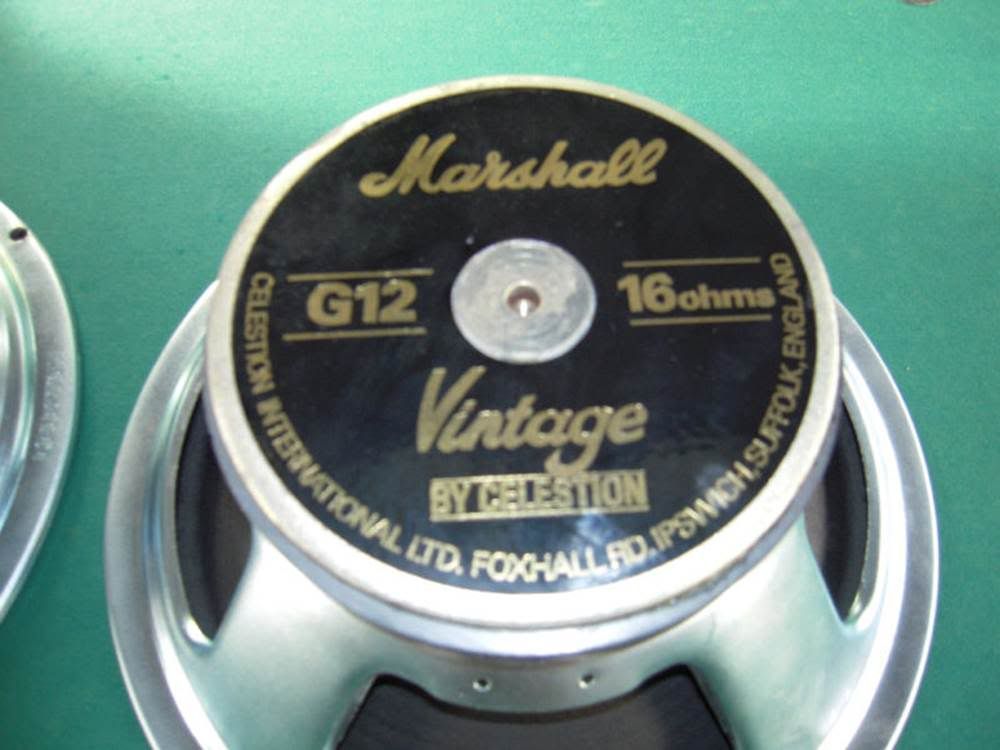
All V30s out there are NOT created equal. All V30s are not designed the same. All V30’s are not made in China, even today, not that it matters, per se. All V30s are not made from the same parts and materials. All three versions above, for example, sound noticeably different to me. Some work better than others with certain amps. They all generally have a V30-type sound and clearly all live in the same tonal family, but the mic and the human ear and the band mix do not experience them all the same way, IMHO. They each require different amp settings with the same amp. YMMV. I am also advised by Celestion directly that ALL verisons of the V30, no matter when or where or for whom made, are about 65 watts in actuality. So the discretionary 70w or 60w ratings of various manufacturers as printed on their cabs over the years have no real bearing on sound, quality, build, etc. That has never changed. If your 1998 Mesa recto cab has 280w printed on the speaker jack plate, and your 2011 Mesa recto cab has 240w printed on the speaker jack plate, rest assured it is still the same English-made T4335 V30 inside, unchanged since about 1991, with the same tone and power handling. If the older one sounds better, it's just more broken in and the adhesives, magnets and paper cones are aging nicely.
Yes a Marshall 1960BV cab will sound different from a Randall XL4x12B will sound different from a Mesa Stiletto cab. No, it's not just the cabinet design, the speakers themselves are all different models inside each of them, so pick you favorite based on your amp and the overall tone you hear for the speaker model in question which you prefer, rather than "brand hype."
Hopefully this post will dispel at least some of the many internet myths and misinformation of the mysterious V30 and its different models and voicings, which no one ever seems to have any actual factual info about, and no one seems very comfortable discussing. If you've ever hated or loved a V30 with an amp, someone else may not be having the same experience because the particular V30 they alternately hate or love may actually have a slightly different voicing and be a different T code model altogether, notwitstanding how a really good break-in over the years can affect all of the above.
Cheers!
